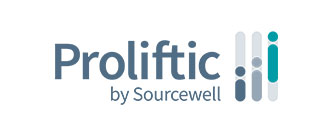Data are important and allow districts to make well-informed strategic decisions to benefit their students. Administrators often use data for an overall picture of how their students are progressing and a snapshot of the district’s health.
The COVID-19 pandemic made whole-child data even more important, and it’s well documented that students are behind in reading and math. It’s crucial that districts make the most of their data — from comparing past benchmarks to measuring each student’s progress each month. Bringing disparate sources of data into an easy-to-access platform makes it more efficient for educators to tackle challenges.
When student data are hard to access within the district or don’t work well with the programs that educators use, the data are almost useless. Administrators and teachers are burdened with moving data back and forth between different programs, such as Google Sheets, or manually pushing Excel files since programs don’t always understand each other’s data formats and can’t share data easily.
A data integration platform helps translate and share data between a student information system — also known as an SIS — and a multitude of programs. A strong data integration platform saves administrators and teachers time while also providing the information teachers need to set their students up for success.
Like many large-scale technology adoptions, data integration platforms are difficult to implement well.
Choosing a vendor
Successful student data integration platform implementation vendors have a few key attributes in common, including:
-
Data and change management expertise
-
A focus on partnership and stewardship

Data and change management expertise considerations
1. Look for an implementation partner who provides:
SIS integration and data load services
Does the vendor do all the data moving, or does the organization bear the responsibility? Moving data between systems is time consuming and requires a specific professional background. Some vendors even stipulate a required FTE in order to administer the data portions of a data integration system. There is a better way. Partner with a service-oriented vendor, like Proliftic, who understands SIS integration and data load services are critical for better data integrity.
Data and configuration validation
Does the vendor provide a blank slate as a platform that the customer must configure all of the features and components alone, or is it a shared journey where the vendor works as a partner with the customer? In a shared-journey approach, more can be accomplished and the exchange of ideas creates a sense of partnership.
Data strategy
How does the vendor meet the needs of the organization’s data strategy? What is needed for access levels, implementation phases, and creating the customer’s better data future?
2. Consider vendor qualifications & capabilities
When selecting a partner, choose one who can support and coach the organization around the use and interpretation of data.
It’s important to identify who is leading the product management and vision. Educators? Technicians? Data scientists? Additionally, understand the role of the district/end users in product design and delivery.
Lastly, consider if the vendor’s personnel have backgrounds in roles as educators, administrators, and school psychologists. In other words, does the vendor have deep, practical expertise in education and can serve as a thought partner — providing solutions, or alternate pathways to meet customer needs when there are potential limitations in the software capabilities?
3. Choose a vendor with a proven track record for security and protections against an attack
Cybersecurity is a growing concern in education, with more and more reports of schools and districts, along with education companies, being targeted in phishing and ransomware attacks. Sometimes, we don’t realize that almost everything in a school building runs on a network — the HVAC system, security cameras, lights, and more. That means there are more vulnerabilities and avenues for someone to gain access to sensitive information.
Recognizing this, it’s a good idea to ensure the vendor that you’re considering is a Student Privacy Pledge signatory, which means a public commitment for the responsible collection and use of student data.
With the increasing amount of sensitive information on students, it’s crucial that vendors have strong relationships with districts and have the right protections in place in case of an attack. A data integration platform support team should work hand in hand with your district’s IT department to ensure students’ data are safe and secure, as well as have a plan in place if something goes wrong. Within this process, consider the roles that use data within the district. A vendor with a proven track record and awareness of the ongoing threats to districts cannot be overlooked.
Choose a partner who has a deep, practical expertise in education.
Partnership and stewardship considerations
A. Emphasize strong communication and collaboration
The implementation of a data integration platform should be just the beginning of a partnership with a vendor. It’s important that districts work and meet with their vendors on a regular basis. Check-in meetings each month during initial onboarding and ongoing support are critical to success. These meetings are a chance to discuss what’s working, not working, and where there are questions. Your vendor should also have a quick response time. Additionally, creating a communication plan is key to successful change management.
B. Share common goals and the same definition of success
What’s the ultimate goal when implementing a new data integration platform? Is it to keep administrators more informed about how students are progressing when the district is switching between in-person and remote learning? Is it to help educators make more informed decisions in their classrooms? Is it to see how the district’s academic progress compares to previous years?
A data integration platform means nothing if the district and the vendor aren’t on the same page. Training and implementation should be tailored to a district’s unique needs, including how to use the system and access data. Onboarding is a shared responsibility and should be a true team effort. While the vendor should do the main lift and connect the data, district administrators and educators need to work together with the vendor to provide the feedback and framework for onboarding. Establishing a project sponsor at the district is helpful. After all, an implementation is only as successful as an onboarding.
C. Have a strong implementation and training plan
Long-lasting partnerships are the result of a solid foundation when implementing and training staff. Look for a vendor that will provide MTTS/RTI implementation consultation, change management assessment, a stakeholder communication toolkit, post-implementation evaluation, and ongoing support and training — and meet the needs of your data strategy.
A good vendor partner wants districts to get the most out of their investments while ensuring administrators and educators are comfortable navigating the data integration platform and have a support team that’s responsive to challenges, concerns, and issues that might arise. It’s a true ongoing partnership.
Conclusion
Not all data integration platforms are created equal, but a good one gives administrators and teachers the power to lead with data and see how their students are performing and why. A complete, detailed picture of performance across the district, down to individual students, aligns everyone so they can work toward a common goal — student success.
The Proliftic team has honed the implementation and support process for its student data integration platform — ensuring there aren’t surprises for end users. The Proliftic implementation team tailors training and implementation to the unique needs of the district, including how it plans to use the system and data. This includes identifying district roles and defining a mutually agreed upon definition of success. Additionally, they provide access to support resources including user groups and experts, such as former educators and administrators, and data and MTSS/RTI thought leaders.

